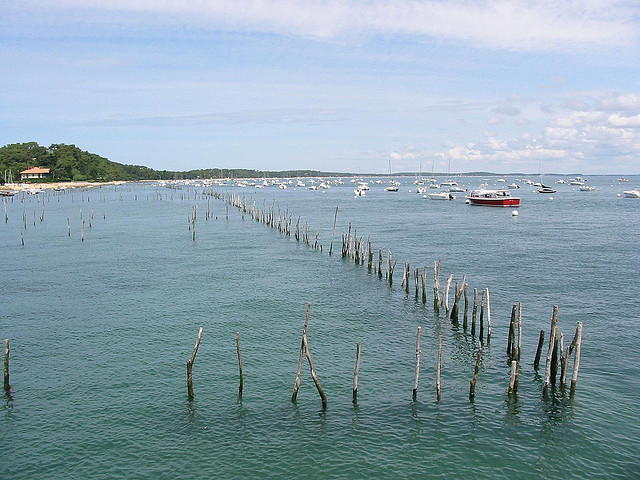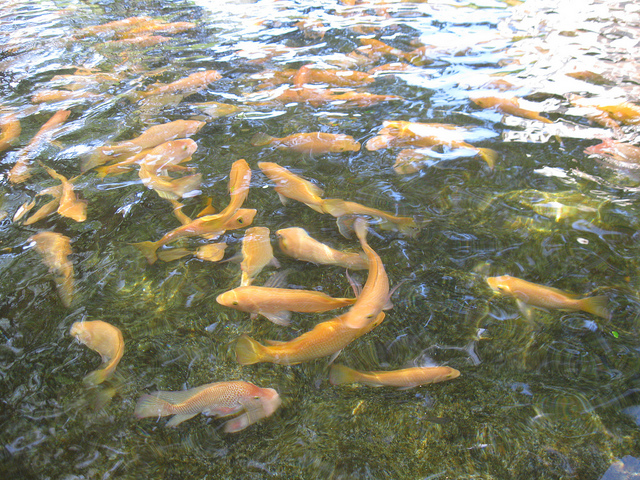The Case For Embracing Seafood

But despite the huge growth, public perception of finfish and shellfish continue to get a poor reputation for its wrongly perceived nutrition and environmental impact. Instead we as Americans should re-evaluate and add seafood to our diets since they can be environmentally-friendly and healthy additions to our plate.
We hear it all the time, that the fish in our oceans will soon deplete and nothing will be left. So how could we eat more fish and seafood without hurting our oceans? The answer to that is the same to what we've been doing to our land animals we eat, farming.
Humankind has been farming fish and seafood for centuries yet its potential for mass production has only been realized in the past few years. It's only recently in the past few years where production from aquaculture has begun to almost match the output of wild capture. Rather than fishing out the fish of the sea, aquaculture presents the alternative method to obtaining commodities from our aquatic environments by domesticating salt and freshwater species for human use.
SEE ALSO: Health Food Trend Increasing In South Los Angeles
However, aquaculture has always been under heavy scrutiny. Like any form of domestication, farming organisms carry risks and drawbacks such as creating possible pollutants, being very resource intensive, reducing genetic variability, pathogen harboring and even creating invasive species.
Improper farming can even lead to algae blooms, known for taking up all the oxygen in the water and killing surrounding organisms. Farming for big predator fish like salmon and tuna have been known to require lots of feed fish which may require lots of wild caught fish in itself, this type of aquaculture called intensive utilizes additional nutrients like fertilizer from another source. Antibiotics may be used to combat disease just like how antibiotics are used in domesticated land animals.
Some of these legitimate criticisms inaccurately represent aquaculture as a whole. Shrimp farming, which is known to wreak havoc on its environment and be highly susceptible to disease only represent less than 9% of the entire aquaculture industry.
Extensive aquaculture (vs intensive aquaculture) utilizes natural food sources instead of direct addition of feed. Many species farmed via this style include filter feeders that feed on the phytoplankton, such as carp, tilapia and many types of shellfish. The species that is farmed is incredibly important in determining the farm's environmental impact.
While top of the chain fish like salmon are heavy polluters, species like tilapia and many shellfish like mussels and oysters have the ability to purify their surrounding waters. Culturing shellfish like mussels and oysters have been shown to be able to denitrify the environment and clear up waters, allowing for the growth of aquatic grass like eelgrass and creating habitats for other animals while culturing seaweed can even possibly restore coral reefs.
There has been lots of research and investment into creating solutions for these problems.
"The Aquaculture area allows you to get creative and opens up a whole other suite of places to farm food," said Megan Hall, a PhD student studying marine biology at the University of Southern California (USC).
For example, mariculture (aquaculture in the sea) requires species that live in seawater.
"When these species use saltwater, the freshwater that is required in lots of aquaculture is not needed or polluted", commented Hall. "There is tons of room for improvement (in mariculture)."
Despite many technical challenges to mariculture such as corrosive salt water and nature of the ocean, this relatively untapped area represents potential growth for the industry.
Dennis Hedgecock of USC has been working on a Future of Food initiative by researching on how to breed oysters like your average farm grown bundle of corn.
"We're able to breed two pure genetic lines of oysters to create a hybrid that is just overall much bigger similar to how corn is bred now," commented Dr. Hedgecock.

By creating habitats and filtering the seawater while we're farming, we'll be able to alleviate the reduction in biodiversity that's been happening across the globe. How does this aquaculture business translate to us as a consumer? Aren't these just issues that the industry could take care of?
As we find ourselves eating more seafood, we need to be vigilant. Without proper regulation in the industry, the criticisms that face aquaculture will always overcome the positive. Improper farming techniques will become rampant if we don't monitor the industry.
Can our diets handle more seafood? Walking into my local supermarket, I noticed something; the seafood department is pretty small. It's quite odd but 75% of Americans on average consume less than 4oz of fish a week which could explain why the seafood selection at our market is diminishing.
Yet the FDA in this past summer has released guidelines stating that especially pregnant women and children should be eating 8-12 oz. and 6-8 oz. of fish a week respectively. Seafood contains the most omega-3's which are believed to be beneficial to our heart health. Pretty important for a nation where health disease is a leading cause of death.
But perhaps seafood will be the next food trend everyone will embrace soon. It's tough to say since we've definitely grown tired of hearing about the need to eat more fish and less red meat like the Japanese or the Mediterranean to live longer lives.
But what about all the bad things we've heard about eating too much seafood, the cholesterol, the mercury? Shrimp and lobster are big culprits for seafood yet shrimp, although having more cholesterol oz. per oz. than steak has less calories, much less fat despite having more beneficial omega-3 fats than steak.
Even though tilapia has more cholesterol than salmon, it is more environmentally friendly and cheaper. There's a place for all kinds of seafood in our diet. It will just take time adjusting too. Of course remember to eat everything in moderation.
Trying to get your own friends, who are afraid of seafood, to eat a single oyster is a great challenge. Just the other day my friends and I went to a seafood restaurant and a 1/4 of us wouldn't touch the grilled oysters, but when the oyster shooters came out, everyone signed up.
Sometimes you just have to take a different approach. And even getting kids to eat fish is a difficult task. It's hard to expect your children to make healthy decisions if you can't make them yourself.
But if you're adverse to seafood, it's always good to try new things. If you haven't, you may just lose out on the health benefits. Perhaps for an adventurous night out try a species that's environmentally friendly like carp or some mussels. If we can create the demand for the way we want our food, someone will eventually listen.
Reach contributor Steven Lam here.



